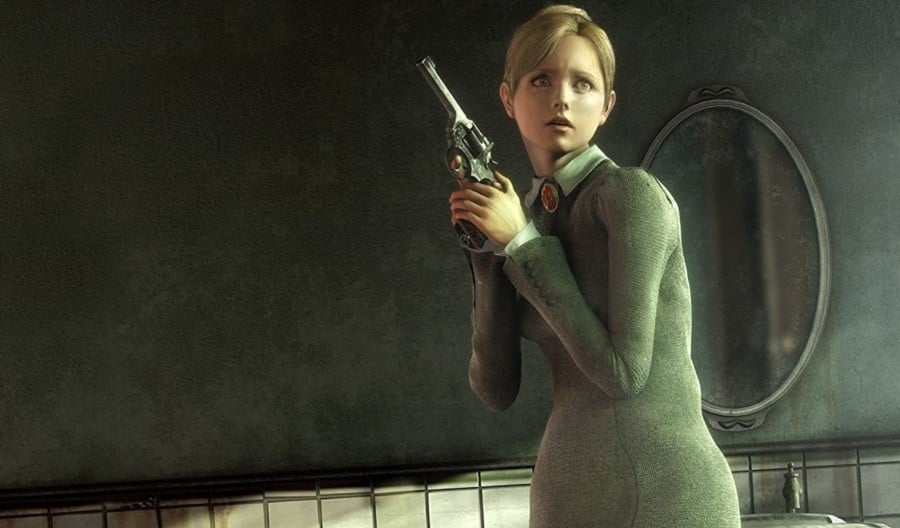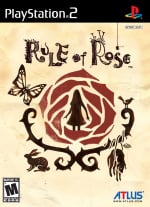
Developed by Japanese studio Punchline and first released in January of 2006, Rule of Rose is a PlayStation 2 survival horror title. Set in 1930's rural England, the protagonist is Jennifer, a 19-year-old girl who finds herself in an abandoned orphanage populated by a strange group of young kids. The original idea actually came from Sony Japan, which suggested Punchline should make a game with young children protagonists. After its initial release in Japan, Rule of Rose would soon encounter its first issues.
At E3 2006, Sony America declared they would not be distributing the survival horror in the United States as the game was not compatible with their image. Rule of Rose would end up being released by Atlus instead.
Tomm Hulett (game designer for Wayforward), a member of the publishing committee, mentions having to check out the game’s contents. “When we got it, I googled it [...] and was very nervous about how we’d manage PR until we played it and saw there was nothing so terrible. In the end, Atlus couldn’t wait to distribute it since having a Sony game was already a victory for us.” It sure didn' seem to make a scandal in the United States, where Rule of Rose was finally released in September 2006. A European release was supposed to follow a couple of months down the line.
But before that, Panorama happened.
Panorama is an Italian weekly magazine, which covers all kinds of topics from fashion to politics, and it is still being published today. In their mid-October 2006 issue, they presented Rule of Rose on the front cover with the shocking headline: 'Whoever buries the girl alive, wins.' In the article, journalist Guido Castellano wrote a lengthy preview of the game, angrily condemning it, amongst other titles such as Bully and Postal II. But worst of all was Punchline’s game, described as containing erotic content and violent scenes featuring underage girls. “Every single frame is dripping with perversion,” writes Castellano. “Every scene features homoerotic and sadistic subtext which we were just not ready for.”
The journalist, in the same article, goes as far as quoting designer Yuya Takayama, who almost seems to come off as proud of these shocking scenes. It is reasonable to assume that this interview never happened or the developer got misquoted. This is because none of the shocking content Castellano described in the article actually happens in the game. Rule of Rose has no 'bury the girl' gameplay mechanic (the journalist was referring to the introductory movie, which is just the protagonist having a bad dream and it is non-interactive), there are no sex scenes with underage girls (in fact, the only 'intimate' scene in the entire game involves two girls smiling innocently at one another while holding hands and touching their heads together), and violence is kept to a minimum. But it doesn’t end there.
In the article, a spokeswoman for an organization called MDC (Movement for Defending Citizens) mentions how they are already organizing demonstrations along with launching a petition to ban Rule of Rose from Italian shops. She continues, “it is outrageous to think our children could have access to a game where the objective is to bury a little girl alive. With sadism, violence and initiation rites, what will our children learn from these games?” Last, but not least, there was a comment from the Mayor of Rome, Walter Veltroni, who mentions politics’ first objective should be to ban Punchline’s survival horror from shops. “It’s incredible to think a game with such violent content can be published in our country,” he said.

Despite their vitriolic comments, several weeks before the article even came out, PEGI had already decreed that Rule of Rose should only be sold to people over the age of sixteen. The article seems to ignore that fact, and Veltroni continues, “...the people who made this game are perverted in body and mind. Our kids don’t deserve to be exposed to such content, and we should immediately do something against the spread of products dealing with hate, cruelty and death.” It is interesting to note that, twenty years before Rule of Rose even came to existence, Italian TV regularly featured Japanese animated series like Hokuto no Ken / Fist of the North Star, where bodies exploded and women were in danger of being assaulted, as part of children's afternoon TV programming.
That which could have been just another day for unprofessional Italian journalists ended up being much more than that, creating a spiral of moral panic all over Europe. Several British newspapers, such as The Daily Mail and The Times, published articles very similar to that of Panorama without checking if their information about the game’s erotic and sadistic contents were true or not. Even worse, in early November 2006, Franco Frattini, at the time EU Justice minister, declared to the European Parliament that such games must not be sold and developers should not even think about making such violent content. Frattini would end up being reprimanded by Viviane Reding, another member of the EU Parliament, who reminded him of the existence of PEGI, purposefully created to deal with said content.
Following Frattini’s comments about “the need to reform PEGI”, Laurie Hall, general secretary of the Video Game Standards Council, confirmed the 16+ age rating and answered quite angrily. “I have no idea where the suggestion of in-game sadomasochism has come from, nor children being buried underground. These are things that have been completely made up,” says Hall. “We’re not worried about our integrity being called into question because Mr Frattini’s quotes are nonsense.”
The Italian politician’s declarations also caused a bit of a stir in France, where the game was still sold as planned, but in limited numbers. That was not the case for the United Kingdom, where Rule of Rose's release ended up being cancelled, as well as New Zealand and Australia (it got released there a few months later). This caused the game to become something of a collector’s item, commanding outrageous prices for a complete copy, even today.
But, still, that’s not where the story ends.
Guido Castellano, the journalist behind the Rule of Rose article and the main party responsible for the moral outrage, had actually plagiarised most of the article’s contents. Chris Darril, the designer of the Remothered series, mentions how he posted a review of Rule of Rose – eight months before Castellano’s article – on a forum. “Thanks to some friends in Japan, I was able to get an early copy, since I wasn’t sure the game would be actually distributed in Italy.” Castellano copied many parts of Darril’s article word by word, going as far as using the same images, like “the thick and sharp thorns of the game of Rose.” Even the description of the characters is identical between the review and the article. It is difficult to think these are just random coincidences.
After Panorama started getting angry responses from gamers, they deleted all comments and, later, removed the article from the website altogether (it is still available on web archive). Darril also mentions how, after publishing his review on another website, the editors decided to write to the magazine, demanding an explanation, but they never received an answer. A couple of months later, several Italian gaming journalists would also ask several of the people quoted in the article to explain where they got their information on Rule of Rose and, especially, why they ignored PEGI’s advice that the game should not be sold to minors. They received no answer either. Darril remembers how he felt like the victim in this situation. “My review, written for free on a forum, ended up being plagiarised by a journalist just to sell a magazine. Unfortunately, being little more than a teenager, I didn’t know what to do. I just felt used. Today, I would have had no qualms about calling a lawyer.”
Darril also mentions how the game ended up being a huge inspiration for his work as a developer. "It was the game that made me realize I wanted to make a survival horror. In my games, there are a lot of references to Rule of Rose: aristocracy, Jennifer and Diana and even adults who don’t care about the world of children growing up too fast. At least there is something I am quite happy about. A professional journalist for an important magazine such as Panorama ended up copying a teenager’s review on a forum. It probably meant I did good work!”

In the end, one could say the story ends on a kind of positive note. While Rule of Rose’s European release did suffer slightly, and some countries never even saw the game, at least it avoided being censored and banned. But still, Panorama saw no repercussions from publishing an article made up, for the most part, of straight-up misinformation – not even Guido Castellano, who still works for the magazine today.
While it might be easy to toss aside what happened as a strictly 'Italian' problem, the way misinformation quickly spread to other countries does raise a possible red flag. Even worse is how the only people who seemed to want to ban the game were those who didn’t know anything about Rule of Rose or even about organizations like PEGI. It is hard to deny the possibility of something like this happening again, especially in an age where information travels faster than in 2006 and fact-checking has become even harder to do.

